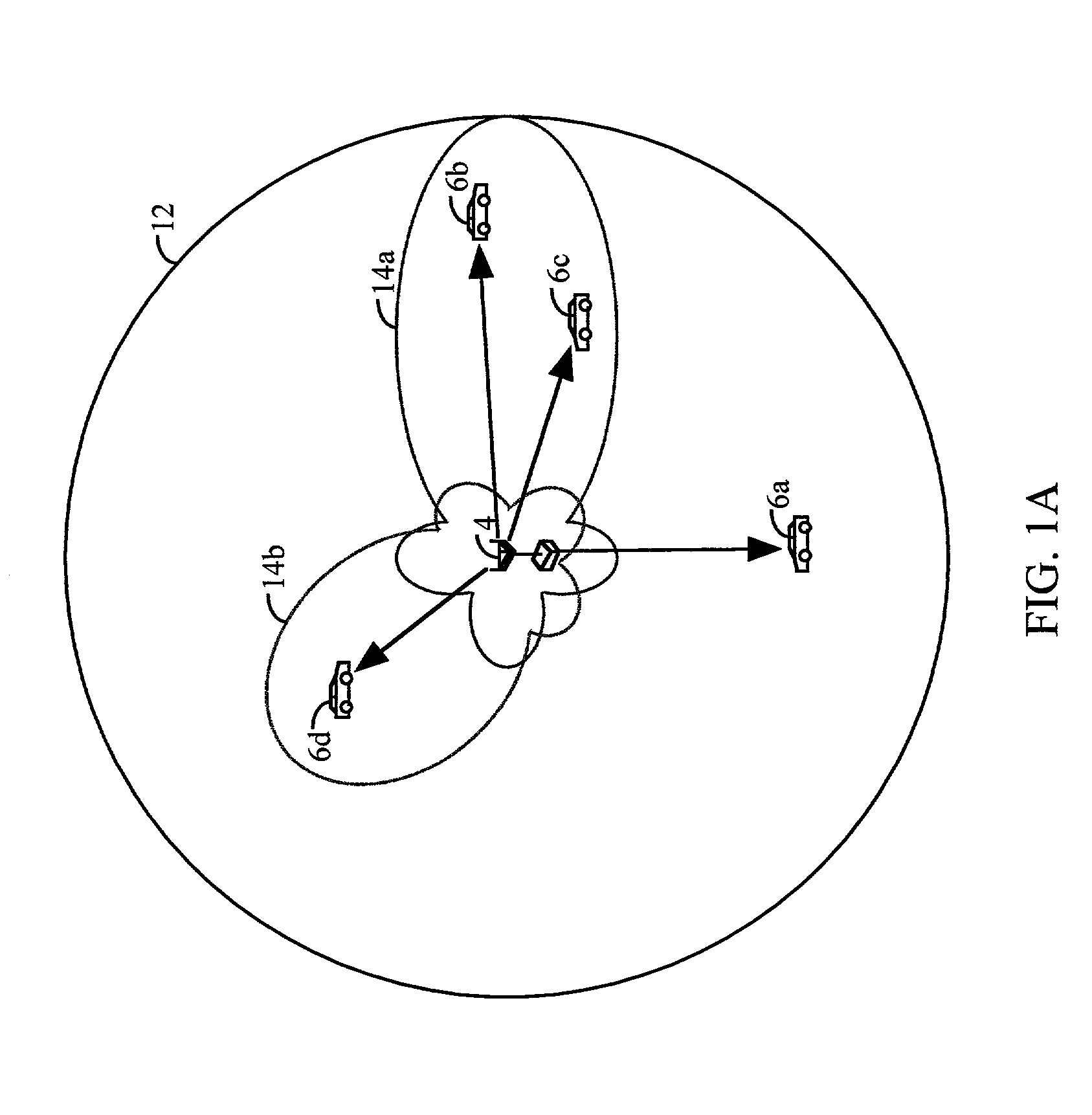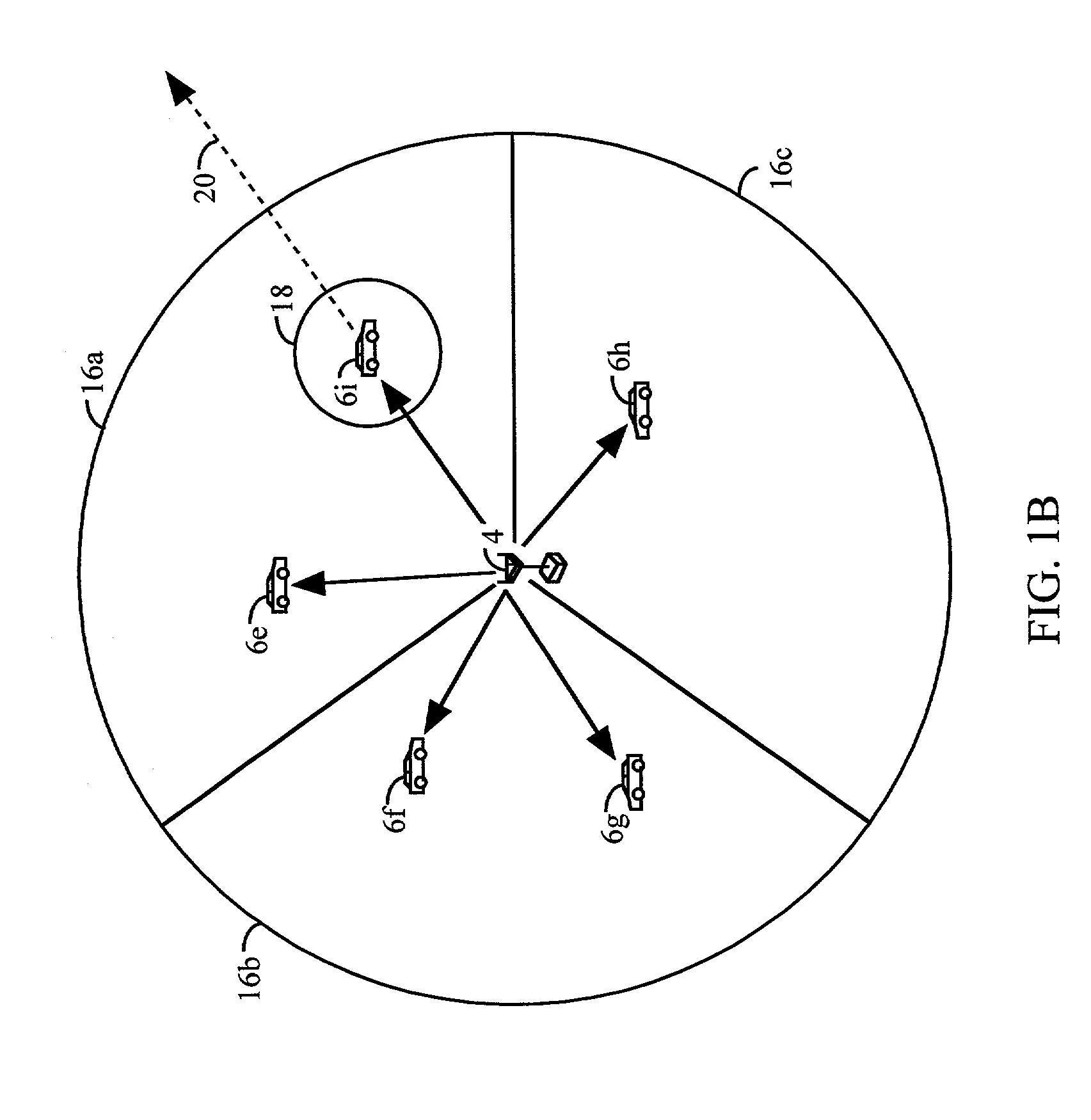Method and apparatus for providing orthogonal spot beams, sectors, and picocells
a spot beam and orthogonal technology, applied in the field of communication, can solve the problems of affecting the performance of the communication system, and spreading of signals from other sectors, so as to improve capacity, reduce interference, and improve the effect of capacity
- Summary
- Abstract
- Description
- Claims
- Application Information
AI Technical Summary
Benefits of technology
Problems solved by technology
Method used
Image
Examples
Embodiment Construction
[0024]The present invention is a method and apparatus for providing orthogonal spot beams, sectors, and picocells. In accordance with the IS-95 standard, the forward link comprises 64 orthogonal code channels which are generated by covering each code channel with one of 64 unique Walsh sequences. In accordance with the IS-95 standard, Walsh sequence zero is reserved for the pilot signal. To increase capacity, the forward link transmission can comprise multiple transmissions. Each transmission can be directed to a particular area by the use of directive antennas. For example, a transmission can be directed at the entire area surrounding the base station (e.g., an omni-directional transmission), a sector of a cell, or a localized area within a sector or a cell using spot beams or picocells. Spot beams provide antenna gain, minimize interference, and increase capacity. In this specification, a particularized transmission comprises a transmission covering a cell, a sector, or a picocell...
PUM
 Login to View More
Login to View More Abstract
Description
Claims
Application Information
 Login to View More
Login to View More - R&D
- Intellectual Property
- Life Sciences
- Materials
- Tech Scout
- Unparalleled Data Quality
- Higher Quality Content
- 60% Fewer Hallucinations
Browse by: Latest US Patents, China's latest patents, Technical Efficacy Thesaurus, Application Domain, Technology Topic, Popular Technical Reports.
© 2025 PatSnap. All rights reserved.Legal|Privacy policy|Modern Slavery Act Transparency Statement|Sitemap|About US| Contact US: help@patsnap.com



